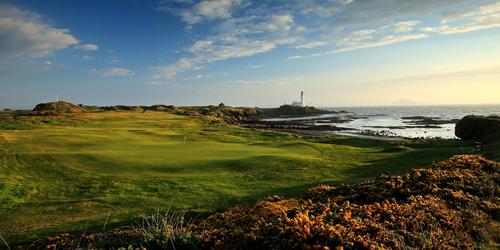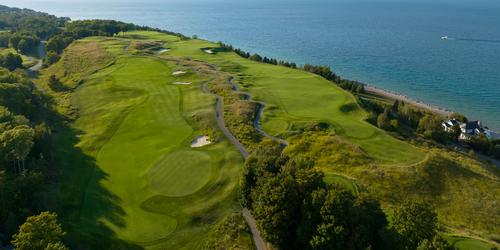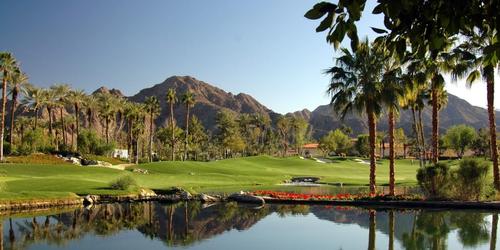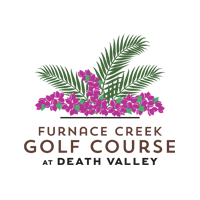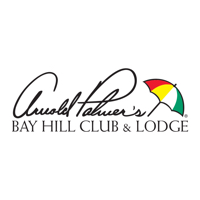My Insights on Irish Golf
A Look At My Odyssey To Ireland
By Blaine Newnham
Finally, there is links golf in America, at places like Bandon Dunes in Oregon and Chambers Bay in Washington, real links golf played on fescue grasses and land reclaimed from the sea.
But as good as these courses might be, they aren't cut from the old sod. Golf courses are an amenity to life in America, you know, resorts where people get away from it all. In Ireland, they are at the center of life.
After twenty years I knew there would be changes in Irish golf. But beyond being more expensive, nothing had changed. Oh, the greens were of higher quality as irrigation and agronomy improved, but the culture was still distinctly Irish.
We were clearly incidental even as visitors - especially as visitors - to what was going on. Kids, families, seniors, women, playing together, playing separately, gathering for a club sandwich after a round, the golf club often the center of a small town's social life.
In May we began an odyssey that included playing nine courses in seven days, pretty much within two hours of Dublin but including the Northern Ireland courses of Royal Portrush, Royal County Down, Portstewart and Ardglass.
Royal Portrush, of course, is not only the adopted home course of Graeme McDowell and Rory McIlroy, the past and present U.S.Open Champions, but recently crowned British Open champ, Darren Clarke.
But Royal Portrush is no Oakmont or Olympic Club, no Pinehurst or Pebble Beach. I didn't see anyone use a golf cart - or buggy as they call them - even though there are buggies.
The regulars push or pull a trolley. They walk briskly. They play briskly. They don't care as much about their score as they do the outcome of their match.
Into a nasty wind, par becomes relative, often unattainable.
Even at a place like Royal County Down, where green fees are more than $200, there are no range balls to hit before you play because there is no range, just a couple of scruffy nets behind a huge hedge.
There are no free tees or ball markers as you approach the first hole. No yardage markers once you're on the first hole, not one.
Many of the courses you play, like Portrush and County Down, are private clubs, well, sort-of-private. They opportunistically set aside a few hours a day for public play, giving you a chance to play Portmarnock in Dublin, an exclusive haunt for golfers, when you can't play Merion or Medinah in the U.S.
Opportunistic for us because we can play there, and for them so they can keep costs down for their members. A good deal was had by all.
It sounds corny, but what you love about Ireland is the history and, of course, the people, especially those who surround the golf courses.
The little man at Baltray in County Louth - now there's a great golf course - who told the gents to go through the men's locker room, the ladies the ladies locker room and meet up in the bar where they'd be serving tea.
Or the former captain at Ardglass who gave us his special parking spot as he was leaving the course on a busy Saturday even though he had no idea who we were (although we were doing a pretty good imitation of dumb Americans).
Or the current president who found us out on the 11th hole and said he'd meet us afterwards for a pint in the clubhouse.
Or Pat Ruddy, the designer, owner, bottlewasher at the European Club, a new wildly entertaining course south of Dublin, who dished up apple tarts and tea along with a tour of his home above the clubhouse and his extensive collection of golf books.
Many of the courses - Portmarnock, the Island Club, Royal County Down and Royal Portush - are more than 100 years old, all built in the 1890s, tumbling, natural, who-knows-what's-over-the-next-dune courses.
At Portstewart, where the wind lashes the course most days, there are buried huts in which to escape the elements.
Then there are the stories. On an earlier trip to Galway, we had heard about the young priest who talked the farmers into donating the rocky land along the beach to create Connemara.
And then we had a pint with him after a round in which he quite accidentally was playing behind us.
Irish golf is untouched golf. A course is discovered among the dunes, not conceived. There is no intimidation by bulldozer, no attempt by a course architect to play God.
You walk from lunch in a pub in the little town of Lahinch right onto the first tee of one of the world's great courses, a course with an unmatched pedigree, designed by Old Tom Morris in one century and Alister MacKenzie in another.
There are blind shots that require you ring a bell once out of range, fairways that cross each other, even a hole where you hit across the green whenever it is not in use.
Funky, fun, nothing about pretentiousness, but everything about camaraderie and competition.
As for organizing a trip to Ireland there are plenty of professional guides willing to help. To pick the courses and corresponding overnight hotels, to set up tee times, and even to drive the bus, if necessary.
Personally, I like doing it myself and with the internet the job is clearly easier than it was 20 years ago.
On all three of my trips to Ireland, we have driven ourselves. It takes some concentration - look right, left, right when you pull out - but it delivers an undeniable freedom.
Maybe it is because I've been there often but I'm no longer into trophy hunting. I like the less-known, out-of-the-way, fun-and-funky courses. On the last trip, the places that did it for me were the Island Club near the airport in Dublin, and Pat Ruddy's European Club south of the city, and to the north, Baltray in County Louth and Ardglass overlooking the Irish Sea, where you tee off against the backdrop of an ancient castle.
When I go again, I want to play one world-class course, Ballybunion on the West Coast and Royal County Down on the East Coast, and then a bunch of places few people go, places where you might get lost between holes, where you might drive across one fairway to get to another, where the Guinness does taste better.
Ever heard of Narin-Portnoo, or Portsalon, or Ardglass or Carne or Baltray? Ever had apple tart with Pat Ruddy?
Try it, you'll like it.
Article Tags: Golf in Ireland
Revised: 07/27/2011 - Article Viewed 28,803 Times
About: Blaine Newnham
![]() Thirty five years as a sports columnist - last 23 in Seattle - during which he witnessed five Olympic Games as well as Tiger Woods four consecutive major championship victories. He covered Willie Mays when he played for the San Francisco Giants, Steve Prefontaine when he ran for Oregon, Ken Griffey Jr. when he debuted for the Seattle Mariners. He walked 18 holes with Ben Hogan at the 1966 U.S. Open, and saw Larry Mize chip in to beat Greg Norman at the Masters. He has written two books, including Golf Basics for Barnes and Noble and played everywhere from Ballybunion to Bandon Dunes, his most recent trip in May, a nine-rounds-in-seven-days gambol from Dublin to Northern Ireland and back. He and his wife, Joanna, live in Indianola, Wa.
Thirty five years as a sports columnist - last 23 in Seattle - during which he witnessed five Olympic Games as well as Tiger Woods four consecutive major championship victories. He covered Willie Mays when he played for the San Francisco Giants, Steve Prefontaine when he ran for Oregon, Ken Griffey Jr. when he debuted for the Seattle Mariners. He walked 18 holes with Ben Hogan at the 1966 U.S. Open, and saw Larry Mize chip in to beat Greg Norman at the Masters. He has written two books, including Golf Basics for Barnes and Noble and played everywhere from Ballybunion to Bandon Dunes, his most recent trip in May, a nine-rounds-in-seven-days gambol from Dublin to Northern Ireland and back. He and his wife, Joanna, live in Indianola, Wa.
Contact Blaine Newnham:
GolfTrips.com - Contributor




